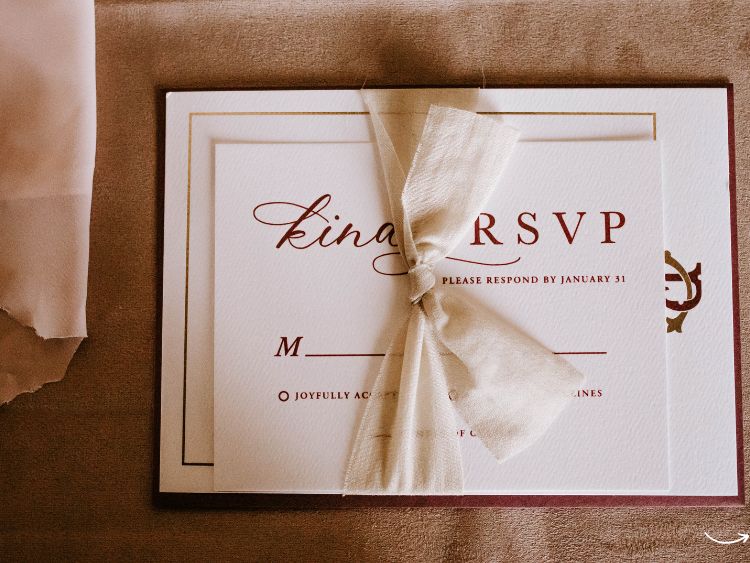Table of Contents
- Introduction: What It Means to Officiate a Wedding
- Step-by-Step Guide to Becoming a Wedding Officiant
- Getting Ordained
- Understanding State and Local Requirements
- Planning the Ceremony
- Crafting the Script
- Customizing Vows
- Day-of Responsibilities: How to Keep Everything Running Smoothly
- Essential Tips for First-Time Officiants
- Common Questions (FAQs)
- Summary
- Authoritative Resources
1. Introduction: What It Means to Officiate a Wedding
So, you’ve been asked to officiate a wedding—congrats! Officiating is more than just standing up and reading some lines; it’s about guiding two people through one of the most significant moments of their lives. With the right preparation and a heartfelt approach, you’ll create memories that’ll last a lifetime.
2. Step-by-Step Guide to Becoming a Wedding Officiant
Getting Ordained
Most people can become a wedding officiant simply by getting ordained online. Many websites offer ordination services for free or a small fee. Here’s a quick overview of how to get ordained:
- Choose a reputable website like Universal Life Church or American Marriage Ministries.
- Complete the application process — it’s usually quick and easy.
- Receive your ordination certificate, which proves your legal right to perform weddings.
Understanding State and Local Requirements
Wedding officiants must follow state-specific guidelines, as legal requirements vary. In some areas, officiants must register with the county clerk’s office or show proof of ordination. Here’s how to check:
- Research your state’s marriage laws online. Many government websites outline local officiant requirements.
- Visit the county clerk’s office if necessary, especially for locations like New York City, where officiants must register in person.
Each state’s laws differ, so it’s essential to know exactly what’s required where the wedding will take place.
3. Planning the Ceremony
Crafting a memorable ceremony involves more than just words; it’s about connecting with the couple and helping them express their love. Let’s dive into the steps to create a ceremony script that’ll be both personal and memorable.
Crafting the Script
A wedding ceremony script often includes several key elements:
- Welcome and Introduction: Set the tone and welcome guests.
- The Couple’s Story: Share a few personal anecdotes about the couple’s journey.
- Vows and Ring Exchange: This is the heart of the ceremony, where the couple exchanges promises and symbols of commitment.
- Pronouncement: Announce the couple as married, making it official!
Customizing Vows
Many couples choose to write their own vows. If they need help, offer these tips:
- Be authentic — encourage them to write from the heart.
- Keep it short and sweet — a few heartfelt lines are often more impactful than a long speech.
- Include specific promises — small, personal promises add a unique touch to the vows.
4. Day-of Responsibilities: How to Keep Everything Running Smoothly
On the wedding day, your role as an officiant goes beyond just delivering the ceremony. Here’s how to make sure everything goes off without a hitch:
- Arrive early to get familiar with the venue and speak with the couple.
- Check the sound equipment if needed, especially for outdoor weddings.
- Keep a calm presence, as the officiant often sets the mood for the entire ceremony.
- Lead the rehearsal if requested, ensuring the bridal party knows where to stand, walk, and sit.
Finally, don’t forget the marriage license! It’s your job to sign and submit it after the ceremony to make the marriage legal.
5. Essential Tips for First-Time Officiants
Officiating a wedding for the first time? Here are some insider tips to help you feel confident and prepared:
- Practice the script aloud – it helps with pacing and enunciation.
- Use a binder or tablet to keep the script organized and easily readable.
- Speak clearly and project your voice, especially for outdoor weddings.
- Stay flexible – weddings rarely go exactly as planned, so be prepared for any last-minute adjustments.
6. Common Questions (FAQs)
Q1: Do I need a license to officiate a wedding?
It depends on the location. While most states only require ordination, some places have additional requirements. Check with the county clerk where the wedding will be held.
Q2: How long does a typical wedding ceremony take?
Most ceremonies last between 20-30 minutes. However, this can vary depending on the couple’s preferences and the number of readings, songs, or other personal touches.
Q3: What should I wear as the officiant?
The officiant’s attire should match the wedding’s formality. For example, if it’s a formal event, a suit or dress is appropriate. For a beach or backyard wedding, a more casual outfit might be suitable. Always check with the couple first!
Q4: Can I personalize the ceremony script?
Absolutely! Personalizing the script with stories about the couple, humorous anecdotes, or unique readings can make the ceremony more meaningful.
Q5: How can I manage pre-wedding jitters?
A bit of anxiety is natural, but preparation is key. Practicing the script multiple times and visualizing the ceremony can help calm any nerves.
7. Summary
Officiating a wedding is a rewarding role that comes with a unique set of responsibilities. From getting ordained and meeting legal requirements to crafting a personal, heartfelt ceremony, the steps outlined in this guide ensure you’re prepared for every moment. The best officiants connect with the couple, engage the guests, and create a ceremony that celebrates love in a way that’s true to the couple’s story.
8. Authoritative Resources
Here are some resources for more information on becoming a wedding officiant and planning ceremonies:
- Universal Life Church – https://www.themonastery.org
- American Marriage Ministries – https://theamm.org
- FindLaw – Marriage Laws by State – https://www.findlaw.com





